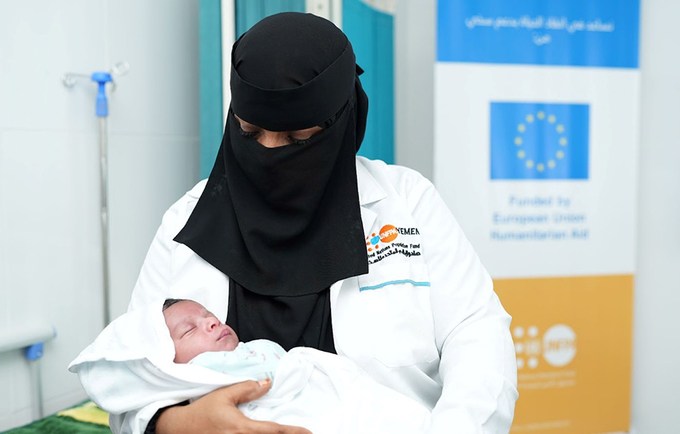
HADRAMOUT, Yemen – When Mona began working as a midwife in her local health centre 30 years ago, she was the first in Yemen’s Hadramout Governorate.
“Back then, our area was a world away from health care,” she told UNFPA, the United Nations sexual and reproductive health agency. Now head of the midwifery department at the Shahir Health Centre in Hadramout, she explained hers was an impoverished community that lacked schools, medical facilities and health workers.
“Women faced pregnancy without proper care or follow-up. The traditional midwife, with all her goodwill, was limited in resources,” added Mona. “Many births ended in complications, sometimes tragically. The city hospital was out of reach due to cost, transportation and sheer lack of awareness.”
Fatima*, a patient at Mona’s health centre, confirmed this description of the past: “Survival hinged on pure luck, for both mother and child.”
Yemen has one of the highest maternal death rates in the world, and only one out of five functioning facilities currently offers maternal and newborn health services. Some 17.8 million people need health-care assistance in 2024, among whom an estimated 5.5 million women need reproductive health services.